Let’s dive into our selection of ten annual flowers that will grace your garden with their beauty from spring until the first frost. From marigolds to zinnias, petunias to geraniums, and beyond, these plants offer a range of colors, sizes, and growing habits to suit your preferences and garden style.
1. Marigold (Tagetes spp.)

Marigolds are cheerful and vibrant annuals that come in various sizes and colors, such as yellow, orange, and burgundy. They bloom continuously from spring until frost, providing a burst of color in the garden. Marigolds are easy to grow and prefer full sun. They are known for their pest-repellent properties and are often planted to deter insects. Marigolds can reach a height of 6 to 36 inches (15 to 90 cm), depending on the variety. They thrive in USDA hardiness zones 2 to 11. Here are some more Marigold growing tips!
2. Zinnia (Zinnia spp.)
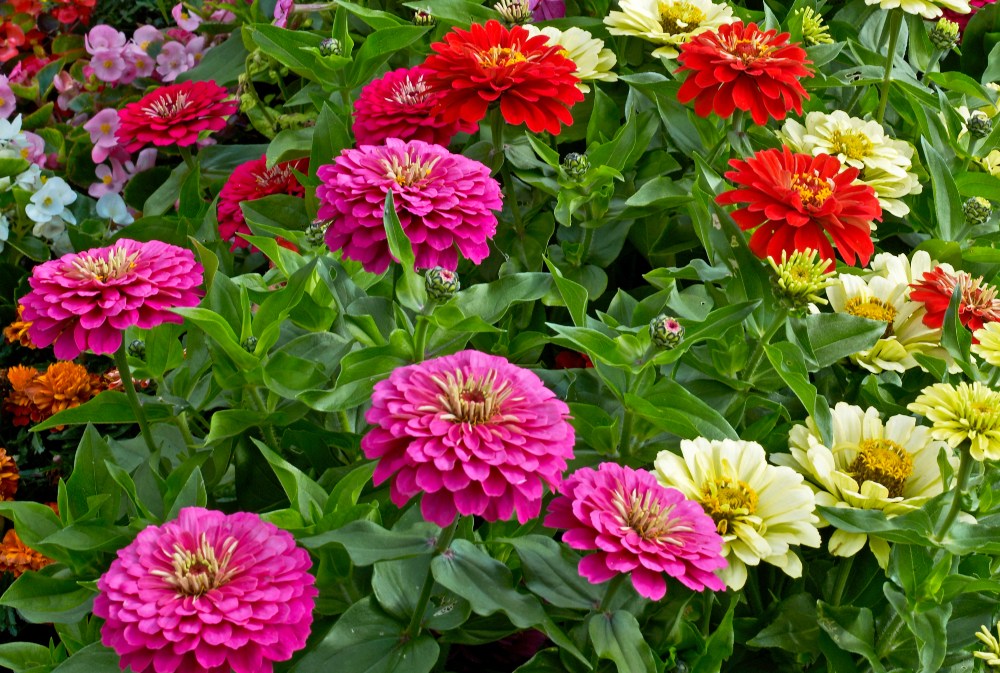
Zinnias are popular annual flowers that offer a wide array of colors, including red, pink, orange, yellow, and white. They are known for their extended bloom time, starting in spring and continuing until the first frost. Zinnias are easy to grow from seeds and prefer full sun. They come in various heights, ranging from dwarf varieties of 6 to 12 inches (15 to 30 cm) to taller varieties reaching 2 to 4 feet (60 to 120 cm). Zinnias are versatile and can be used in borders, beds, or containers. They thrive in USDA hardiness zones 3 to 10. Here are some more Zinnia growing tips!
3. Petunia (Petunia spp.)
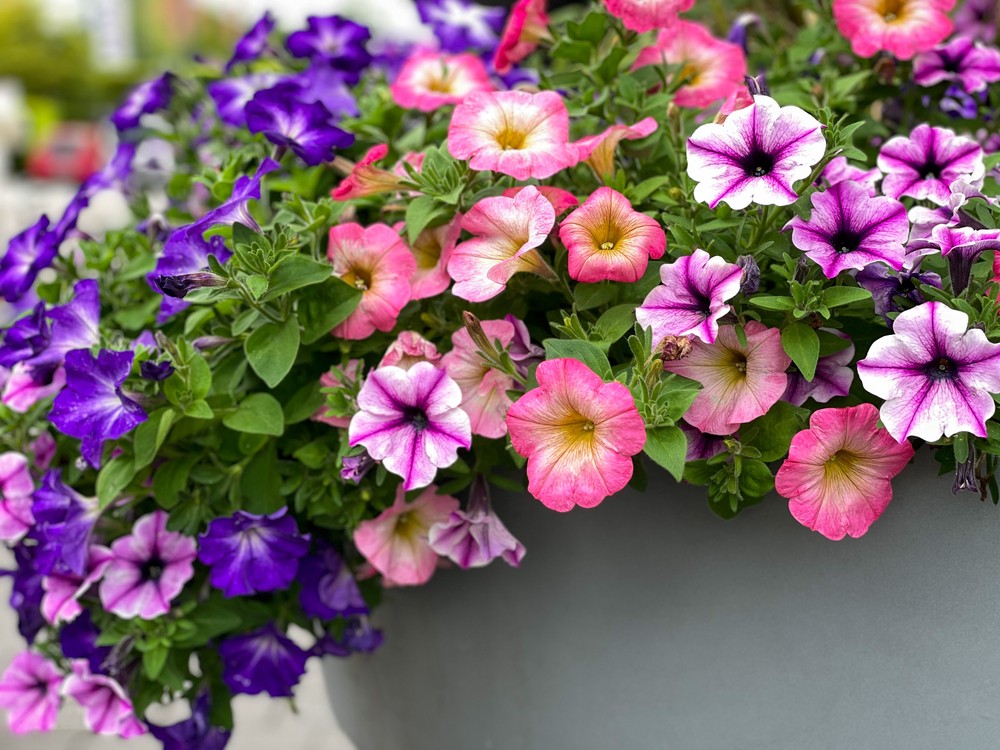
Petunias are classic annual flowers that are available in a wide range of colors, including shades of pink, purple, white, and red. They bloom profusely from spring until frost, creating a vibrant display in the garden. Petunias prefer full sun but can tolerate partial shade. They are versatile and can be used in hanging baskets, containers, or as ground cover. Depending on the variety, petunias can reach heights of 6 to 18 inches (15 to 45 cm). They thrive in USDA hardiness zones 10 to 11 but are typically grown as annuals in other zones. Here are some more Petunias growing tips!
4. Geranium (Pelargonium spp.)
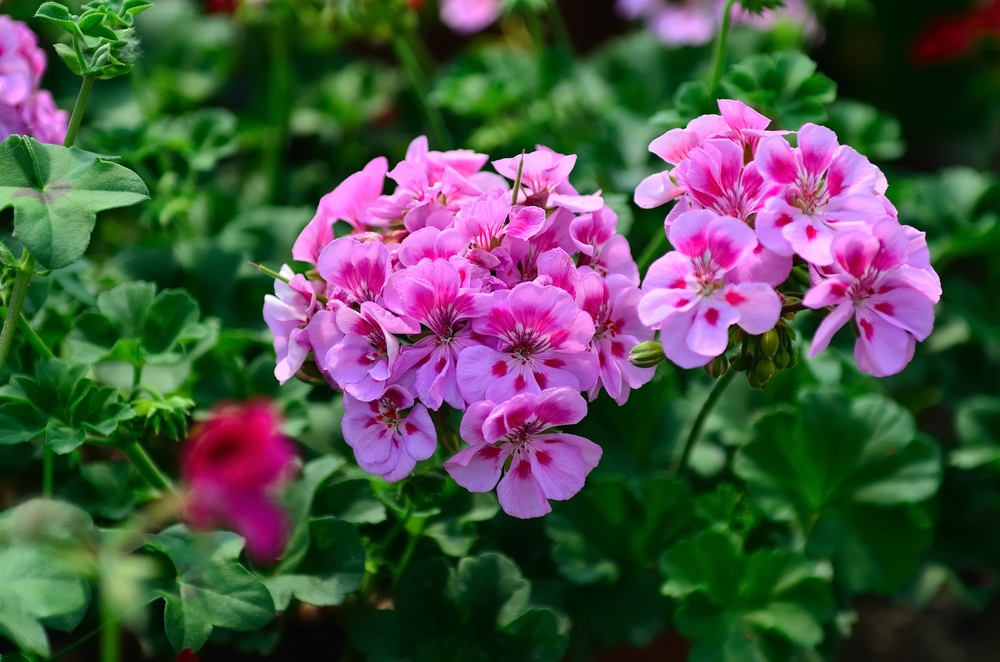
Geraniums are beloved annual flowers known for their showy flower clusters in shades of red, pink, white, and lavender. They have a long blooming season, starting in spring and lasting until frost with proper care. Geraniums prefer full sun and well-draining soil. Deadheading spent flowers can encourage continuous blooming. Geraniums can reach heights of 8 to 24 inches (20 to 60 cm) depending on the variety. They are ideal for borders, containers, and hanging baskets. Geraniums thrive in USDA hardiness zones 9 to 11 but are typically grown as annuals in other zones. Here are some more Geranium growing tips!
5. Salvia (Salvia spp.)
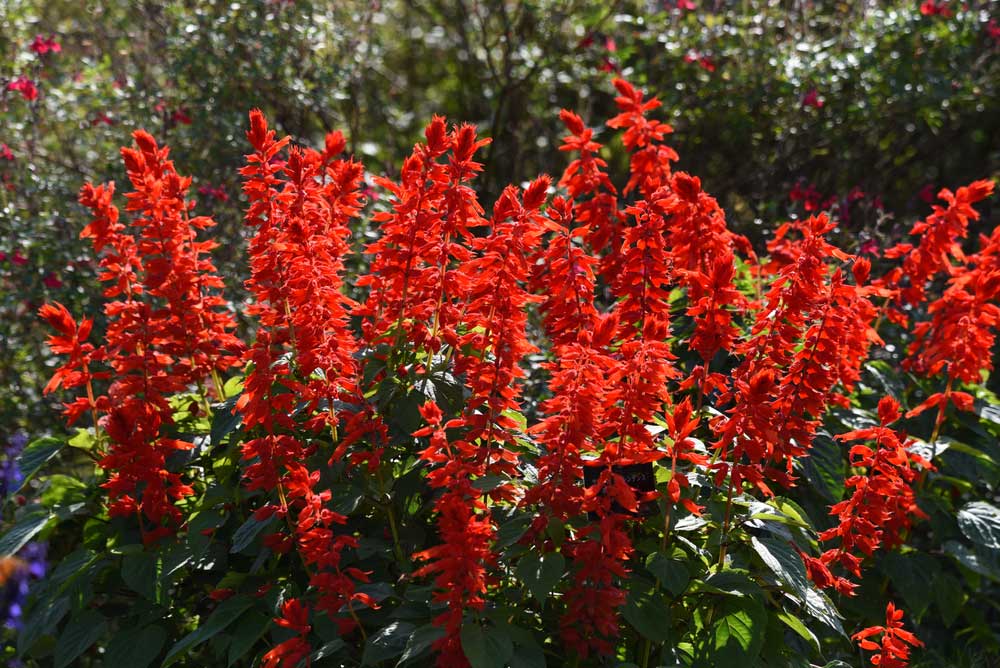
Salvia encompasses a wide range of annual flowers known for their extended bloom time and attracting pollinators like butterflies and hummingbirds. Popular varieties include Salvia splendens with bright red flowers and Salvia farinacea with blue or purple flowers. They prefer full sun and well-draining soil. Salvia plants can range in height from 6 inches to 4 feet (15 cm to 120 cm) depending on the variety. They are versatile and can be used in borders, containers, or as cut flowers. Salvia thrives in USDA hardiness zones 7 to 11. Here are some more Salvia growing tips!
6. Verbena (Verbena spp.)
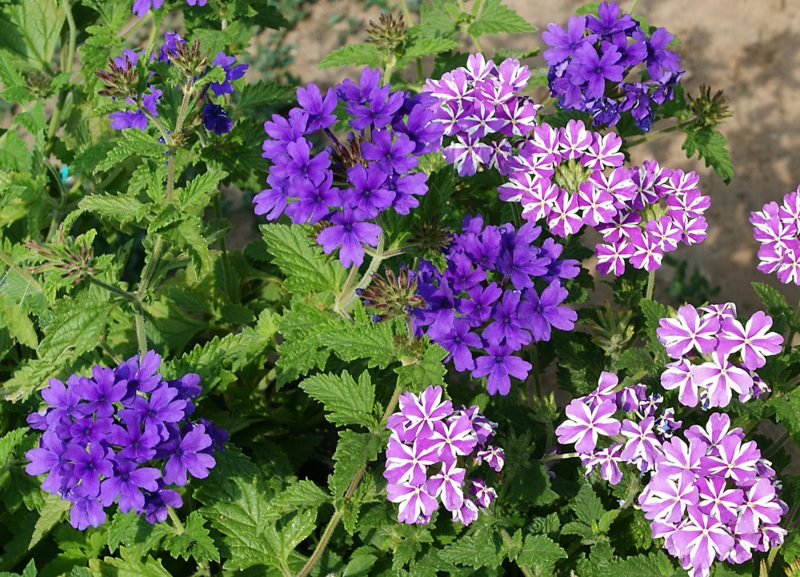
Verbena is a versatile annual flower with clusters of small, colorful blossoms in shades of pink, purple, red, or white. It has a long blooming season, starting in spring and lasting until frost. Verbena thrives in full sun and well-draining soil. It is a low-maintenance plant that attracts butterflies and pollinators to the garden. Verbena can reach a height and spread of 6 to 24 inches (15 to 60 cm), depending on the variety. It is suitable for borders, rock gardens, or containers. Verbena thrives in USDA hardiness zones 6 to 11.
7. Cosmos (Cosmos bipinnatus)

Cosmos are charming daisy-like annual flowers that bloom abundantly throughout the summer and continue until the first frost. They come in various colors such as pink, white, and red, with feathery foliage. Cosmos prefer full sun and well-draining soil. They are easy to grow from seeds and attract butterflies and bees to the garden. Cosmos can reach heights of 2 to 6 feet (60 to 180 cm), depending on the variety. They are great for cutting gardens, borders, or wildflower meadows. Cosmos thrive in USDA hardiness zones 2 to 11.
8. Portulaca (Portulaca grandiflora)
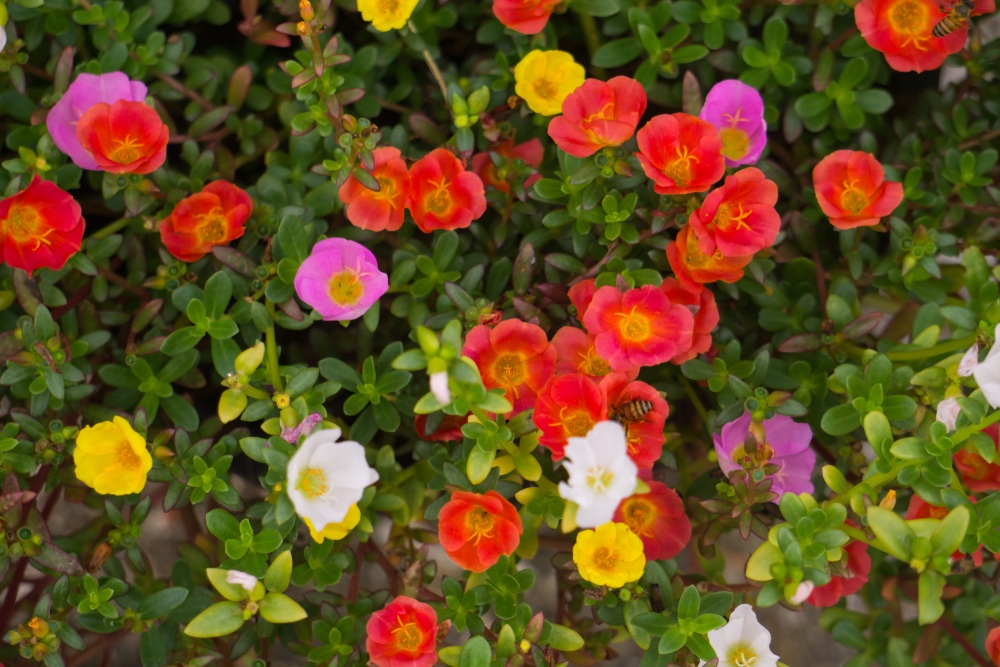
Portulaca, also known as moss rose, is a heat-tolerant annual with vibrant, low-growing flowers that bloom all summer and into fall. They come in shades of pink, red, yellow, orange, and white. Portulaca thrives in full sun and well-draining soil, making them suitable for rock gardens, borders, or containers. They have succulent-like leaves and are drought-tolerant. Portulaca grows to a height of 4 to 8 inches (10 to 20 cm) and spreads up to 12 inches (30 cm). They thrive in USDA hardiness zones 2 to 11. Here are some more Portulaca growing tips!
9. Nasturtium (Tropaeolum majus)
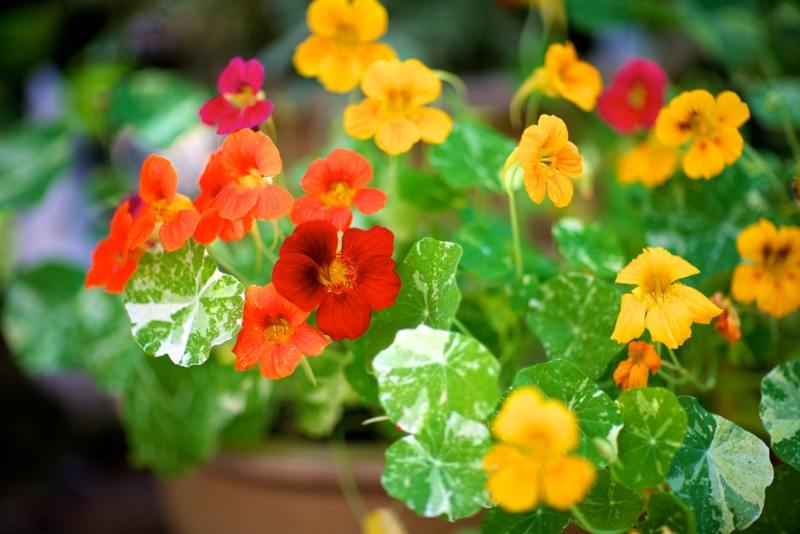
Nasturtiums are edible annual flowers with vibrant blossoms in shades of red, orange, and yellow. They bloom continuously from spring until fall, adding color to the garden and attracting pollinators. Nasturtiums prefer full sun to partial shade and well-draining soil. They are easy to grow and can be used as ground cover, in hanging baskets, or as climbing vines. Nasturtiums can reach heights of 6 to 12 inches (15 to 30 cm) and spread up to 12 inches (30 cm). They thrive in USDA hardiness zones 9 to 11 but are typically grown as annuals in other zones.
10. Celosia (Celosia argentea)
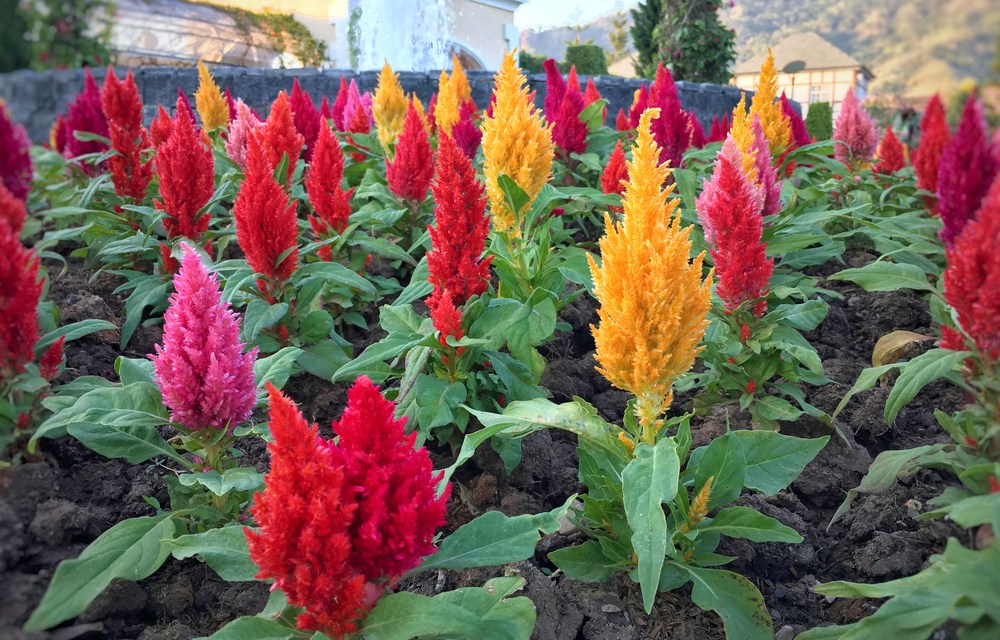
Celosia, also called cockscomb, is an eye-catching annual flower with unique, feathery blooms in vibrant colors like red, orange, yellow, and pink. They have a long bloom time, lasting from summer until the first frost. Celosia thrives in full sun and well-draining soil. They can reach heights of 1 to 3 feet (30 to 90 cm) depending on the variety. Celosia is great for borders, containers, or as cut flowers. They thrive in USDA hardiness zones 10 to 11 but are typically grown as annuals in other zones.



 ?. ts.dhung.
?. ts.dhung.

